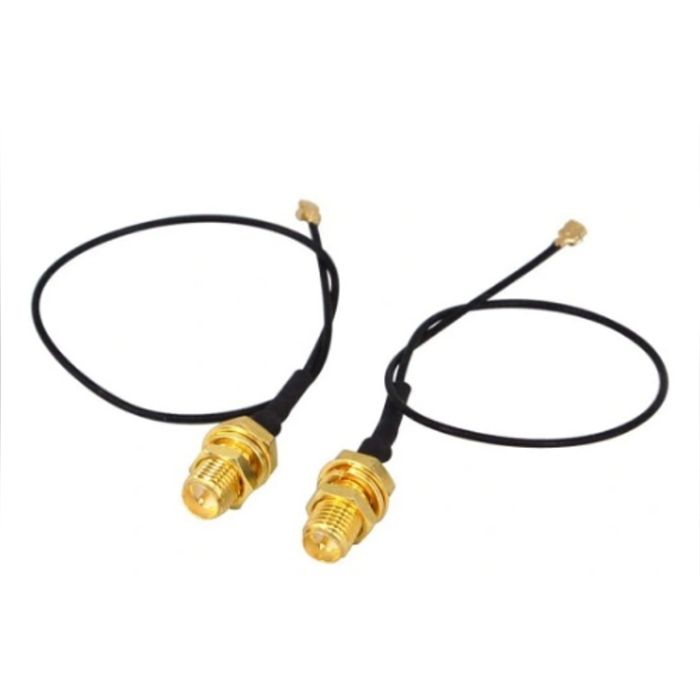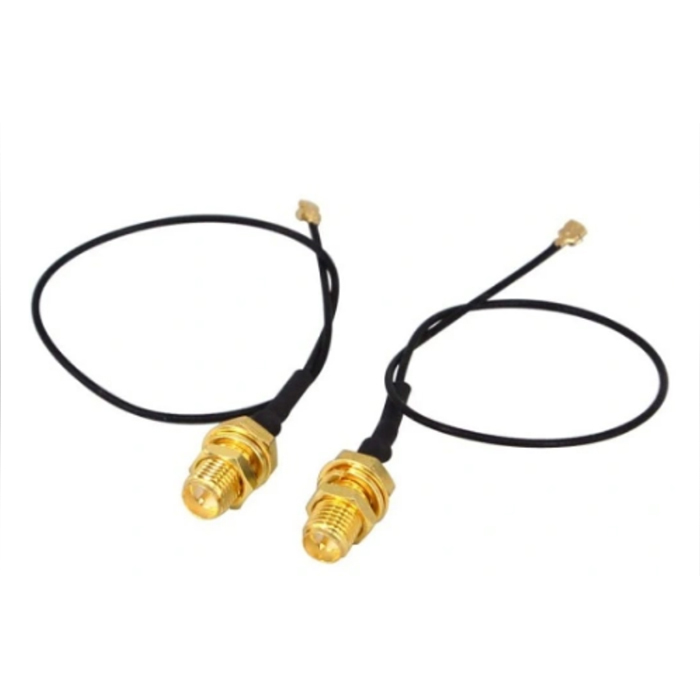- Home
- Service
- Product Center
- Application
- About Us
- Videos
- News
- Contact Us


RF Connectors are specialized coaxial interfaces designed for transmitting high-frequency radio signals. They ensure precise impedance matching (typically 50 or 75 ohms) to minimize signal loss and reflection in applications from telecommunications to test equipment. Common types include SMA, BNC, and N-type, each offering specific performance characteristics for different frequency ranges and environmental conditions.
Main Technical Specifications

| Frequency Range(MHz) | 690-960/1710-2690 |
| Impedance(Ω) | 50 |
| Gain(dBi) | 3 |
| V.S.W.R | 3 |
| Connector Type | CABLE/SMA |
| Product Application | IOT |
Product Specifications
RF Connectors Overview
RF Connectors are essential components used to join and disconnect radio frequency (RF) signals in various communication systems. Designed to ensure reliable and efficient signal transmission, RF Connectors are critical in applications such as telecommunications, broadcasting, and wireless networks. Our RF Connectors offer exceptional performance with low signal loss and high durability, making them suitable for both high-frequency and high-power applications. Available in various types, including SMA, BNC, N-type, and TNC, these connectors are engineered for seamless integration and optimal signal integrity.
Application Areas
RF Connectors Applications
1.Telecommunications: Connects RF equipment and antennas in telecommunication systems for stable and reliable signal transmission.
2.Broadcasting: Used in broadcast equipment to ensure high-quality signal transfer for television and radio transmission.
3.Wireless Networks: Provides connectivity in wireless communication systems, including Wi-Fi and cellular networks, ensuring robust signal strength and minimal interference.
4.Test and Measurement: Ideal for laboratory and field testing applications where precision and reliability in signal measurement are crucial.
5.Aerospace and Defense: Ensures secure and high-performance signal transmission in aerospace and defense systems, where reliability and durability are critical.
Product Features
RF connectors are critical components in high-frequency signal transmission systems, characterized by precise engineering and standardized performance metrics.
Impedance Matching: Standard RF connectors maintain a characteristic impedance of 50Ω (e.g., N-Type, BNC) or 75Ω (common in video applications), with a typical tolerance of ±1-2Ω to minimize signal reflection, achieving a Voltage Standing Wave Ratio (VSWR) of < 1.2:1 up to 18 GHz.
Frequency Range: Performance varies significantly by type. Standard BNC connectors operate effectively up to 4 GHz, while N-Type extend to 11 GHz. Precision variants like the 2.92mm (K-Type) support operations up to 40 GHz, and 1.85mm connectors can reach 67 GHz.
Low Insertion Loss: High-quality connectors exhibit minimal signal attenuation. For instance, a gold-plated SMA connector can have an insertion loss of less than 0.1 dB at 6 GHz, ensuring efficient power transfer, which is critical in sensitive receiver and test equipment applications.
Durability & Mating Cycles: Connectors are rated for a specified number of connect-disconnect cycles. A standard SMA connector is typically rated for 500 cycles, while more robust N-Type can exceed 1,000 cycles without significant degradation in electrical performance, ensuring long-term reliability.
Environmental Sealing: Many outdoor or aerospace connectors, such as the 7/16 DIN, are designed with robust environmental seals, often achieving an IP67 rating. This provides complete protection against dust ingress and water submersion up to 1 meter for 30 minutes.
Superior Shielding: Effective shielding is paramount for EMI/RFI immunity. High-performance connectors utilize multi-point contact interfaces and full 360° shielding, typically providing >100 dB of shielding effectiveness up to 3 GHz to prevent signal leakage and external interference.
FAQ
FAQs for RF Connectors
1. What are RF Connectors used for?
RF Connectors are used to join and disconnect radio frequency signals in various communication systems, ensuring reliable signal transmission with minimal loss.
2. What types of RF Connectors are available?
Common types include SMA, BNC, N-type, and TNC connectors, each designed for specific applications and performance requirements.
3. How do I choose the right RF Connector?
Select an RF Connector based on factors such as frequency range, power handling capacity, and connector type compatibility with your equipment.
4. Are RF Connectors durable?
Yes, RF Connectors are engineered for durability and reliability, capable of withstanding various environmental conditions and ensuring consistent performance.
5. Can RF Connectors be used in high-frequency applications?
Yes, RF Connectors are designed for high-frequency applications, providing low signal loss and maintaining signal integrity at elevated frequencies.